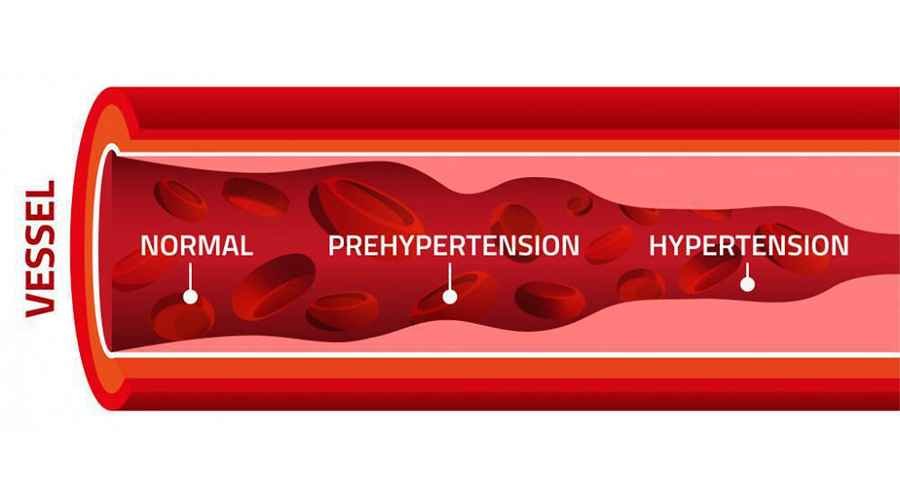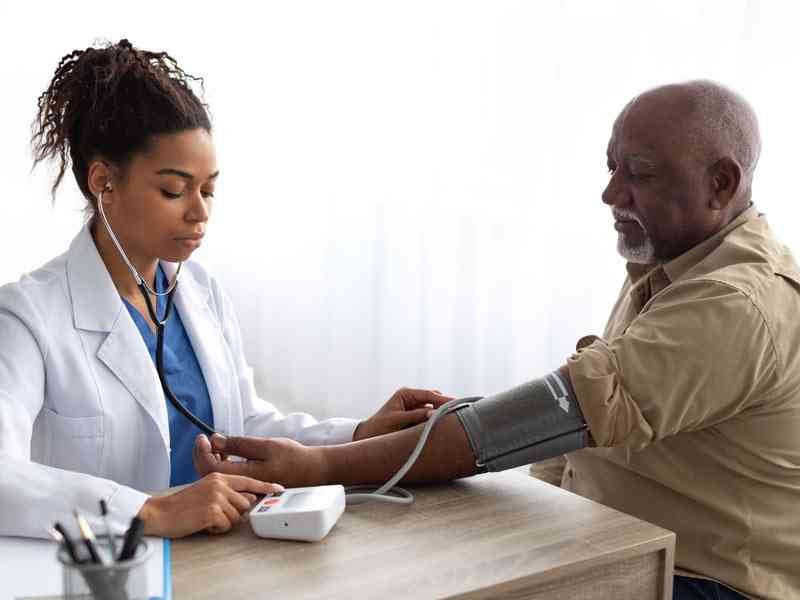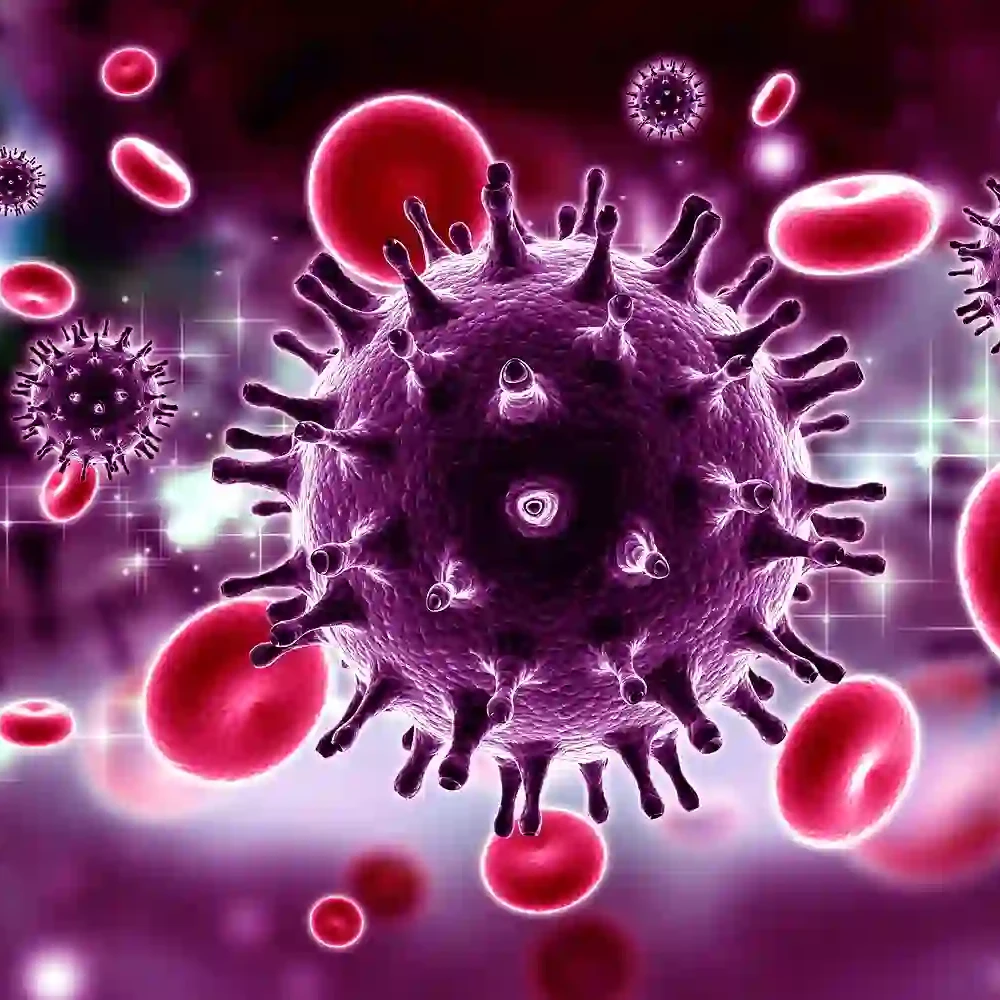Hypertension, one of the most common conditions in medical practice, is a silent killer because it doesn’t manifest any symptoms until it has already started damaging various body systems.
The most prevalent disease of the heart and blood vessels (cardiovascular system) in Nigeria is hypertension, which adds significantly to the burden of non-communicable diseases (diseases that are not spread through infection or through other people).
Hypertension
(What is elevated blood pressure?)
Hypertension, also known as elevated or high blood pressure, is a condition in which the blood pressure around the human body is consistently higher than normal.
The normal blood pressure is systolic pressure lower than 120 mmHg(<120mHg) and diastolic pressure lower than 80 mmHg(<80mmHg).
A systolic blood pressure (SBP) of 140 mm Hg or more and/or a diastolic blood pressure (DBP) of 90 mm Hg is regarded as hypertension.
You can visualize the process of pumping water throughout a house to better understand hypertension.
You have a house with a pumping machine that never stops pumping water throughout it.
If water flows calmly through the pipes, everything is fine; however, if the flow is high, water pipes throughout the house are damaged!
When compared to the human body, the pumping machine represents the human heart, the water pipes represent blood vessels that transport blood throughout the body, and the house represents the entire body.
When blood flow is excessive, as in the case of hypertension, the flow damages blood vessels throughout the body! This is why your doctors take your blood pressure to ensure that your blood is flowing normally throughout your body.

Blood pressure fluctuates depending on the body’s needs at any given time and is not always the same value. It is important to note that having slightly elevated blood pressure does not necessarily indicate that you have hypertension.
For example, having body aches, feeling scared, exercising, taking caffeine, etc., can all raise blood pressure naturally. Even though the BP may be high in these circumstances, hypertension is not present.
However, you may have hypertension if your blood pressure is elevated while you’re at rest, not engaged in any strenuous or demanding activity, and not consuming any stimulants or coffee.
Classification
(What are the groups of hypertension?)
There are two classifications of hypertension: primary and secondary hypertension.
1. Primary or essential hypertension
This accounts for 90–95% of adult cases and may arise as a result of environmental, lifestyle, or hereditary factors, however, the cause of the condition is unclear in the majority of instances.
2. Secondary hypertension
This affects 2-10% of cases and has a variety of causes, including renal or kidney problems, blood vessel problems, drug use, and endocrine or hormonal causes.
It is seen in young persons, typically under 40 years of age, manifests abruptly, and is difficult to control. After evaluation, there is typically an apparent underlying cause for high blood pressure.
Risk factors associated with hypertension
(What are the conditions that can lead to developing hypertension?)
Individuals with the following health issues are more likely to develop hypertension:
- Family history of hypertension
- Age: men >55 years or women >65 years
- Obesity
- Low-good lipoproteins (↓HDL)
- High bad lipoprotein (↑VLDL, LDL)
- High salt intake
- Diabetes mellitus or High blood glucose
- Excessive alcohol intake
- Lack of exercise / Physical inactivity
- Cigarette smoking
Assessment
(How do your doctors assess you when your blood pressure is noted to be high?)
Your doctors would confirm the hypertension diagnosis, identify risk factors you might have for hypertension, identify the cause if they could, determine how much it has harmed your body, and develop a treatment plan for you.
They will ask you questions to
- Establish the duration of hypertension
- Identify risk factors
- Establish a cause
- Family history of hypertension
- Identify any complication or end-organ damage
- Pregnancy-related hypertension
- Your use of oral contraceptives
- Renal or urological disease
- Treatment history
They may examine your body by…
- Checking your blood pressure
- Listening to your heartbeat
- Palpate for your kidney
- Examine your eyes
- Etc.
Diagnosis
(How do your doctors make a diagnosis of hypertension?)
Your blood pressure will be checked at least twice, eight hours apart, to determine whether or not you have hypertension. If your blood pressure is high after these two readings, you will be diagnosed with hypertension.
Hypertension is defined as a systolic blood pressure (SBP) of 140 mm Hg or more, a diastolic blood pressure (DBP) of 90 mm Hg or more, or taking antihypertensive medication. It has been divided into stages based on the degree to which the pressure is high. The classification for adults aged 18 years or older has been as follows:
- Prehypertension: Systolic 120–139 mm Hg, diastolic 80–89 mm Hg
- Stage 1: Systolic 140–159 mm Hg, diastolic 90–99 mm Hg
- Stage 2: Systolic 160 mm Hg or greater, diastolic 100 mm Hg or greater
How should you prepare to have your blood pressure taken?

- Before having your blood pressure measured, make sure you haven’t taken any drugs or engaged in any strenuous activity.
- Before your blood pressure is taken, you will be asked to rest for 5–10 minutes.
- Remove any tight-fitting clothing or roll up the sleeves on your arms.
- Your arm should be comfortably resting at the level of your heart. Uncross your legs as you sit up straight with your back against the chair. The palm of your hand should be facing up when you prop your forearm up on the table.
- Your blood pressure will then be taken.
Check out the bottom of this post for a step-by-step tutorial on measuring your own blood pressure at home with an automatic monitor.
Investigation
(What are the tests your doctors might ask you to carry out?)
Your doctors may request that you undergo tests to ascertain how much the disease has damaged your body, such as:
- Urinalysis
- E/U/Cr
- Fasting blood glucose
- Lipid profile
- Echocardiography
- Chest x‐ray
- Etc.
Management of hypertension
(How to treat hypertension)
The first step in treating a newly diagnosed hypertensive state is to make lifestyle changes; however, if these do not control the blood pressure to the desired level, drug therapy is thereafter initiated by your doctors.
1. Lifestyle modifications
Greater results are achieved when two or more lifestyle modifications are combined to reduce blood pressure.
- Overweight and obese patients should lose weight (range of approximate systolic BP reduction of 5–20 mm Hg per 10 kg)
- Reducing body mass index (BMI) to 20–25 kg/m2
- Reducing waist circumference to < 94 cm in men and < 80 cm in women
- Limit alcohol intake
- No more than 1 oz (30 mL) of ethanol per day for men (range of approximate SBP reduction, 2-4 mm Hg)
- No more than 0.5 oz (15 mL) of ethanol per day for women and people of lighter weight (range of approximate SBP reduction, 2-4 mm Hg)
- Reduce salt (sodium) intake to no more than 100 mmol/day (2.4 g sodium or 6 g sodium chloride; a range of approximate SBP reduction, 2–8 mm Hg). If your food tastes sweet enough when you taste it, you probably add too much salt. A little salt should be added to food for hypertension patients, but only to prevent it from becoming flavorless and not to sweeten it. It may be necessary for you to prepare and have a different meal from what the rest of your family eats.
- Maintain adequate intake of dietary potassium (approximately 90 mmol/day). Beans, lentils, potatoes, spinach, broccoli, avocado, and bananas are a few examples.
- Maintain adequate intake of dietary calcium and magnesium for general health.
- Avoid the use of illicit drugs, such as cocaine.
- Stop smoking and reduce intake of dietary saturated fat and cholesterol for overall cardiovascular health
- Engage in aerobic exercise at least 30 minutes daily for most days (range of approximate SBP reduction, 4–9 mm Hg)
- A diet high in fruits, vegetables, and low-fat dairy products
2. Drug treatment
If lifestyle changes are insufficient to achieve the desired blood pressure level, and the blood pressure still exceeds Systolic BP ≥160mmHg and Diastolic BP ≥100mmHg, there are a number of drug options for treating and managing hypertension.
Target BP
- The recommended target for hypertensive patients = ≤140/90mmHg
- When there is established cardiovascular disease, target = ≤130/80mmHg
- In chronic kidney disease (CKD) = ≤130/80mmHg
Drug therapy can be monotherapy with one antihypertensive or combination therapy with more than one drug, depending on the degree of blood pressure elevation. Common antihypertensive include:
- Thiazide diuretics ( eg. hydrochlorothiazide)
- Calcium channel blockers (e.g. Amlodipine, nifedipine)
- Angiotensin-converting enzyme inhibitors (ACEIs) (e.g. lisinopril)
- Angiotensin receptor blockers (e.g. losartan)
- Centrally acting drugs, (eg. Methyldopa)
- B‐blockers (eg. Atenolol)
Let us return to our “water flowing through a house” and hypertension analogy from the beginning of this post to better understand hypertension management.
Because water flows at high pressure in hypertension, control mechanisms such as tap knobs must be installed throughout the houses to control the flow of water. As long as the flow of water is high, you must keep these control measures in place to ensure that the flow is always controlled.
These control mechanisms in the human body are the antihypertensive medications that your doctors will prescribe you. To keep your blood pressure under control, you must always take the medications.
As a result, once correctly diagnosed as hypertensive and started on medications, you will be required to take antihypertensive medications for the rest of your life!
Complications of hypertension
(What are the end results of uncontrolled high blood pressure?)

High blood pressure harms several body parts and can lead to the following problems if it is not controlled.
- Ischaemic heart disease: insufficient blood flow to the heart muscles.
- Heart failure: the heart’s inability to adequately pump blood throughout the body.
- Cerebrovascular disease: damage to the brain’s blood vessels leading to an eventual shortage of blood flow to some areas of the brain. Stroke is one such example.
- Renal impairment: kidney problems as a result of inadequate blood flow
- Visual impairment: vision issues because high blood pressure harms the blood vessels in the eyes.
- Left ventricular hypertrophy (LVH): enlargement of the heart muscles.
- Angina pectoris: Sharp pain in the chest or heart region as a result of an imbalance in the amount of blood flowing to and being used by the heart.
- Myocardial infarction: The irreversible death of heart muscle brought on by diminished or halted blood flow to a portion of the heart, also known as a heart attack.
- Etc.
Measure your own BP at home
Make sure you haven’t taken any drugs or engaged in any strenuous activity before having your blood pressure measured. Rest for 5-10 minutes before taking your blood pressure.
Remove any tight-fitting clothing and roll up your sleeves. Your arm should be resting comfortably at the level of your heart. Sit up straight with your back against the chair, legs uncrossed.
If you are using a digital monitor:
- Hold the bulb in your right hand.
- Press the power button. All display symbols should appear briefly, followed by a zero. This indicates that the monitor is ready.
- The monitor will automatically inflate the cuff.
- Sit quietly and watch the monitor, pressure readings will be displayed on the screen.
- Wait for a long beep. This means that the measurement is complete. Note the pressures on the display screen. Your pulse rate may also be displayed in between or after this reading.
- Allow the cuff to deflate.
Do not inflate the cuff again right away if you do not get an accurate reading. Repeat the measurement after one minute and begin by reapplying the cuff.
Obisesan Damola
Damola is a medical doctor who has worked in the Nigerian healthcare industry for a little over 3 years in a number of primary, secondary, and tertiary hospitals. He is interested in and writes about how technology is helping to shape the healthcare industry. He graduated from the College of Medicine, University of Ibadan, the foremost medical training institution in Nigeria.



